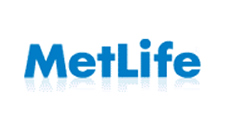Flood Insurance Changes
Flood Insurance News: FEMA NFIP Spring 2016 Changes
Get in the flow. Be in the know. Spring and Flood Insurance Changes Arrive
Each spring the National Flood Insurance Program makes a variety of program changes and updates. Spring 2016 is no different. Here's what you need to know about some of the significant changes taking effect April 1, 2016.
Updated Premium Rates
The NFIP continues to respond to the reform legislation call to increase premium rates and reduce rating subsidies. For most policyholders, the premium increase cap is set at 18%. However, there are additional increases to non-premium fees and surcharges that could result in a net change in the amount paid by a policyholder that exceeds 18%.
There are also four categories of Pre-FIRM subsidized policies that must be increased 25% annually until they reach full-risk rates. Those categories consist of non-primary residential properties, Severe Repetitive Loss (SRL) properties, substantially damage/substantially improved properties and, effective April 1, business properties.
Implementation of 25% rate increases for Non-Residential Business properties.
Beginning April 1, FEMA is implementing 25% annual premium increases for Pre-FIRM subsidized non-residential business properties as required by Section 100205 of the Biggert-Waters Flood Insurance Reform Act of 2012.
The requirement to identify business properties within the larger non-residential occupancy category began with all new and renewal policies with a non-residential building occupancy effective on or after November 1, 2015.
New Rating Methodology for PRPs and the Newly Mapped procedure
The rating methodology for all Preferred Risk Policies (PRPs) and Newly Mapped policies is being revised effective April 1, 2016. The new tables for these two classes of policies will now display a base premium, which will be the combined building and contents premium exclusive of the Increased Cost of Compliance premium and before the application of the Reserve Fund Assessment or any other surcharges or fees. The revised rating methodology will also include a new step that includes a multiplier.
That multiplier will be applied to the policy's base premium. FEMA will provide a table of multipliers in the Newly Mapped section of the Flood Insurance Manual. Initially, the multiplier will be 1.000 for all Newly Mapped policies. Beginning, January 1, 2017, the multiplier will vary based on the calendar year in which the map became effective that mapped the structure into the Special Flood Hazard Area (SFHA). It is expected that the table will be updated effective January 1 of each following year.
The rating steps for PRPs will be identical to the rating steps for Newly Mapped policies. The PRP will always use a multiplier of 1.000.
This new methodology is being introduced in order to comply with Section 6 of Homeowner Flood Insurance Affordability Act (HFIAA) regarding properties newly mapped into the SFHA.
Elimination of Subsidies for Certain Lapsed Policies
Section 3 of HFIAA prohibits the use of Pre-FIRM subsidized rates for "any policy under the flood insurance program that has lapsed in coverage, unless the decision of the policyholder to permit a lapse in flood insurance coverage was the result of the property covered by the policy no longer being required to retain such coverage."
Effective April 1, 2016, FEMA will prohibit the use of Pre-FIRM subsidized rates for policies reinstating coverage for Pre-FIRM buildings that were previously insured by the NFIP where the NFIP coverage is reinstated by means of a payment received more than 90 days after expiration or cancellation of the policy.
This same prohibition applies to policies rated under the Newly Mapped procedure in the event of a lapse.
Reduction of Coverage Clarified
A FEMA policy issuance published in 2005 that changed the reformation and reduction clause in the NFIP's Standard Flood Insurance Policy has been revoked as of April 1.
The policy issuance had previously eliminated the backdating of reformation of coverage and called for only prospective corrections - meaning they would only be adjusted going forward.
But now prospective reformation will only apply to misratings for incorrect flood zones or base flood elevations.
All other misratings will follow the reformation clause in the SFIP. However, when one is discovered after a loss, only the current term, and not the prior term, requires reformation - effective to the beginning of the policy term. If there is loss in the current term and the discovery of the misrating is 60 days or less prior to the renewal, the correction will simply be made as of the upcoming renewal date.
For More Information
The above descriptions are a synopsis of the major program changes occurring April 1. For complete details, please review FEMA bulletin W-15046 - April 1, 2016 Program Changes .







